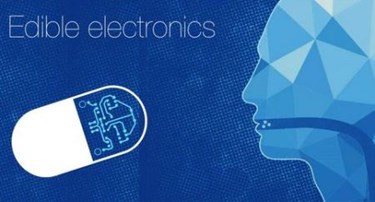Batteries Made From Melanin Could Power Ingestible Devices

The success and safety of ingestible electronics depends on the biocompatibility of their components, and the most potentially toxic part of an electronic device is the battery. Now, scientists from Carnegie Mellon University (CMU) have developed a battery made from melanin, a naturally occurring compound in human skin, eyes and hair, which they say can power a 5 milliWatt device for 18 hours.
CMU Researcher Christopher Bettinger published an article in Trends in Biotechnology last year discussing progress worldwide in the development of “smart pills,” which he claims will make medications much more efficient and safe if they are made from the most biocompatible materials.
“The primary risk is the intrinsic toxicity of these materials, for example, if the battery gets mechanically lodged in the gastrointestinal tract,” said Bettinger, last year.
To design an effective and biocompatible battery, researchers must negotiate levels of energy provided by certain materials and their relative toxicity, bulk, and transience. For example, a team of researchers from Iowa State University (ISU) recently introduced a transient battery capable of producing as much power as a commercially available battery before dissolving in water in thirty minutes. Because the ISU battery uses lithium, though, the prototype is not considered biocompatible, due to the effects lithium is known to have on the brain and central nervous system.
While more complicated batteries may be safe enough for one-time-use diagnostic devices, a robotic pill, for example, would be taken every day and must be much safer.
“If you want to take a device every day, you have to think about toxicity issues,” said Bettinger in a recent press release. “That’s when we have to think about biologically derived materials that could replace some of these things you might find in a Radio Shack.”
Bettinger’s vision was to go to the FDA with a list of ingredients already present in human bodies and permitted in human food and present an ingestible device built from those materials. After experimenting with materials like manganese oxide, copper, and melanin, his team developed a battery capable of powering a small sensing device or drug delivery system.
“We found basically that they work,” said Hang-Ah Park, post-doctoral researcher at CMU. “The exact numbers depend on the configuration, but as an example, we can power a 5 milliWatt device for up to 18 hours using 600 milligrams of active melanin material as cathode.”
Bettinger argues that 600 milligrams isn’t nearly enough melanin to be harmful to a human system. “If you’ve ever had squid ink pasta, then you’ve already swallowed lots of melanin,” Bettinger told Bloomberg.
According to Bettinger, potential applications for the CMU battery include sensing devices that monitor gut microbiome or a vaccine that can deliver bursts of medication over time before the device degrades.
The CMU research team presented its battery at the American Chemical Society (ACS) Annual Meeting in Philadelphia this week and Bettinger told Bloomberg that he plans to publish his results by the end of the year.
